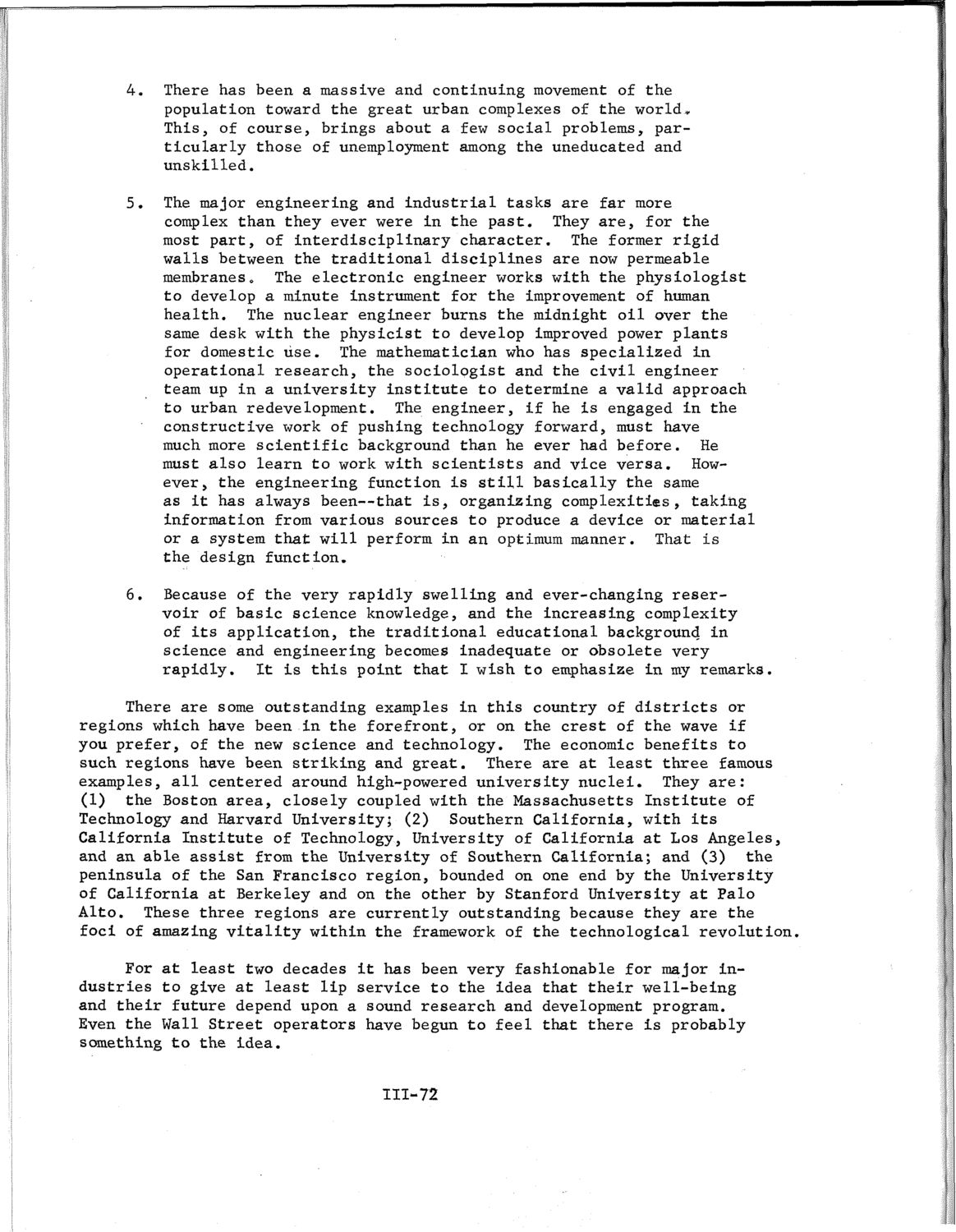| |
| |
Caption: SWE - Proceedings of the First International Conference of Women Engineers and Scientists
This is a reduced-resolution page image for fast online browsing.

EXTRACTED TEXT FROM PAGE:
4. There has been a massive and continuing movement of the population toward the great urban complexes of the world. This, of course, brings about a few social problems, particularly those of unemployment among the uneducated and unskilled. The major engineering and industrial tasks are far more complex than they ever were in the past. They are, for the most part, of interdisciplinary character. The former rigid walls between the traditional disciplines are now permeable membranes. The electronic engineer works with the physiologist to develop a minute instrument for the improvement of human health. The nuclear engineer burns the midnight oil over the same desk with the physicist to develop improved power plants for domestic use. The mathematician who has specialized in operational research, the sociologist and the civil engineer team up in a university institute to determine a valid approach to urban redevelopment. The engineer, if he is engaged in the constructive work of pushing technology forward, must have much more scientific background than he ever had before. He must also learn to work with scientists and vice versa. However, the engineering function is still basically the same as it has always been—that is, organizing complexities, taking information from various sources to produce a device or material or a system that will perform in an optimum manner. That is the design function. Because of the very rapidly swelling and ever-changing reservoir of basic science knowledge, and the increasing complexity of its application, the traditional educational background in science and engineering becomes inadequate or obsolete very rapidly. It is this point that I wish to emphasize in my remarks. 5. 6. There are some outstanding examples in this country of districts or regions which have been in the forefront, or on the crest of the wave if you prefer, of the new science and technology. The economic benefits to such regions have been striking and great. There are at least three famous examples, all centered around high-powered university nuclei. They are: (1) the Boston area, closely coupled with the Massachusetts Institute of Technology and Harvard University; (2) Southern California, with its California Institute of Technology, University of California at Los Angeles, and an able assist from the University of Southern California; and (3) the peninsula of the San Francisco region, bounded on one end by the University of California at Berkeley and on the other by Stanford University at Palo Alto. These three regions are currently outstanding because they are the foci of amazing vitality within the framework of the technological revolution. For at least two decades it has been very fashionable for major industries to give at least lip service to the idea that their well-being and their future depend upon a sound research and development program. Even the Wall Street operators have begun to feel that there is probably something to the idea. 111-72
| |